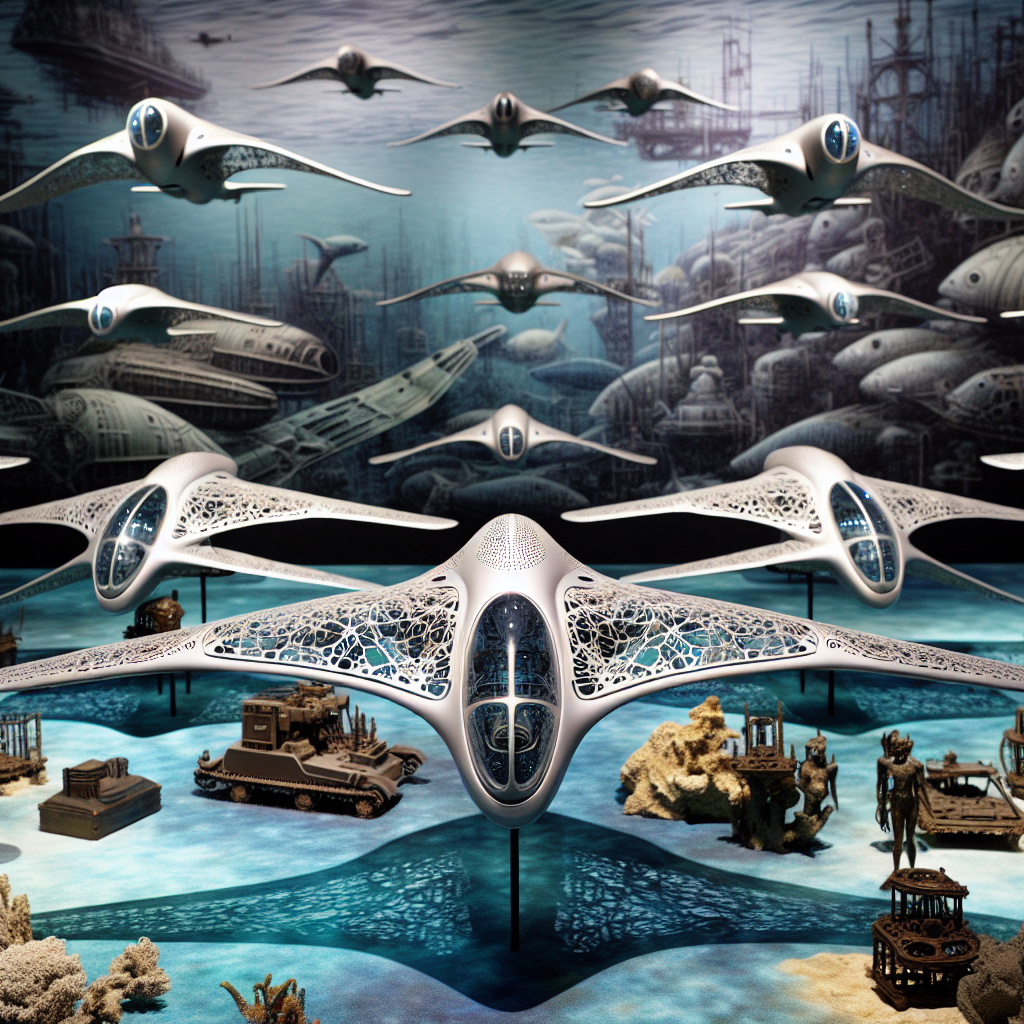
Marine scientists have long admired the remarkable efficiency with which aquatic animals like fish and seals navigate through water. These creatures possess bodies that are finely tuned for hydrodynamic movement, allowing them to traverse vast distances while expending minimal energy. Now, a similar approach is being applied to autonomous underwater vehicles, particularly gliders, which are designed to gather critical data from the depths of the ocean.
Traditionally, the designs for these gliding machines have been relatively limited, often resembling streamlined tubes or torpedoes due to their hydrodynamic properties. The process of testing new glider prototypes often entails a lengthy trial-and-error approach in real-world environments, which can be both time-consuming and resource-intensive.
Researchers from the Massachusetts Institute of Technology (MIT) and the University of Wisconsin-Madison are innovating this design process by leveraging artificial intelligence (AI) to explore and create unconventional glider shapes more efficiently. Their method utilizes machine learning algorithms to evaluate various three-dimensional designs within a physics simulation environment, optimizing them for hydrodynamic performance.
One significant advantage of this AI-driven method is the potential reduction in energy consumption during the fabrication of new designs. The researchers claim that the resulting models can be 3D printed using considerably less energy compared to traditional hand-crafted prototypes. This breakthrough not only streamlines the design process but also contributes to environmental sustainability efforts in manufacturing.
The research team demonstrated the efficacy of their approach by successfully producing two distinct glider designs, each about the size of a boogie board. One glider was inspired by the aerodynamic structure of an airplane, featuring two wings, while the other resembled a flat fish equipped with four fins. Peter Yichen Chen, a postdoctoral researcher at MIT CSAIL and the co-lead of the project, expressed excitement about the diversity of designs achievable through their semi-automated process.
“We’ve developed a semi-automated process that can help us test unconventional designs that would be very taxing for humans to design,” Chen noted. This level of design diversity is groundbreaking, as many of the newly generated shapes had not been previously explored in real-world scenarios.
The genesis of these innovative designs stems from a comprehensive dataset that included 3D models of over 20 conventional underwater exploration shapes, such as submarines and marine creatures like whales, manta rays, and sharks. Utilizing these models, researchers employed a technique known as “deformation cages” that allowed them to manipulate the original designs to create new variations.
After generating these distinctive shapes, the CSAIL team simulated their performance under various conditions, particularly focusing on different “angles-of-attack”—the specific angles at which a vessel approaches the water. For instance, an angle of -30 degrees may be optimal for divers retrieving objects from below the surface. These simulations provided valuable data that fed into a neural network, enabling the prediction of how effectively each glider design would function in various underwater situations.
This innovative use of AI not only signifies a substantial advancement in the design and functionality of autonomous underwater gliders but also opens up new possibilities for oceanographic studies. As these machines become more efficient, they have the potential to significantly enhance our understanding of marine environments by measuring critical factors such as water temperature, salt levels, and ocean current dynamics.
Furthermore, the project has broader implications for climate monitoring, as these gliders can help gather data necessary to assess the impacts of climate change on ocean ecosystems. By refining their design processes and embracing cutting-edge technology, researchers are paving the way for the next generation of ocean exploration tools.
As we continue to explore the depths of our oceans, the integration of AI in designing autonomous gliders represents a significant leap forward, merging technology with biology to facilitate unparalleled scientific discoveries.

Leave a Reply